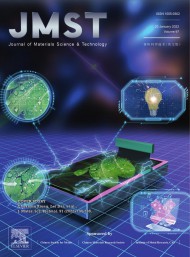
- 创刊时间1985
- 影响因子2.27
- 发行周期月刊
- 审稿周期1-3个月
Journal of Materials Science Technology杂志
SCI期刊 CSCD期刊 统计源期刊主管单位:中国科协 主办单位:中国金属学会;中国材料研究学会;中国科学院金属研究所
《Journal of Materials Science Technology》是一本由中国金属学会;中国材料研究学会;中国科学院金属研究所主办的一本科技类杂志,该刊是SCI期刊、CSCD期刊、统计源期刊,主要刊载科技相关领域研究成果与实践。该刊创刊于1985年,出版周期月刊,影响因子为2.27。该期刊已被CSCD 中国科学引文数据库来源期刊(含扩展版)、统计源期刊(中国科技论文优秀期刊)、知网收录(中)、维普收录(中)、万方收录(中)、EI 工程索引(美)、CA 化学文摘(美)、SCI 科学引文索引(美)、JST 日本科学技术振兴机构数据库(日)、Pж(AJ) 文摘杂志(俄)、国家图书馆馆藏、上海图书馆馆藏、文摘与引文数据库收录。
Journal of Materials Science Technology杂志介绍
本刊简称《JMST》,(ISSN1005-0302,CN21-1315/TG)。1985年创刊。是中国科协主管,中国金属学会,中国材料研究学会和中国科学院金属研究所联合主办的国际性英文期刊,以“加强国际交流,扩大学术影响,服务经济建设”为办刊宗旨,刊登世界各国的具有创新性和较高学术水平的原始性论文,并设有物约综述、快报、简讯及国内外材料界杰出学者简介等栏目,内容包括金属材料、无机非金属材料、复合材料及有机高分子材料等。
本刊主要资助项目有:国家自然科学基金、国家重点基础研究发展计划、中国博士后科学基金、高等学校学科创新引智计划、国家高技术研究发展计划、国家教育部博士点基金、广东省自然科学基金、北京市自然科学基金、河北省自然科学基金、中国航空科学基金。
本刊主要资助课题有:国家重点基础研究发展计划(973Program)、国家自然科学基金(NSFC)、国家高技术研究发展计划(863Program)、高等学校学科创新引智计划(B08040)、国家重点基础研究发展计划(2012CB619101)、国家重点基础研究发展计划(2012CB619100)、国家自然科学基金(51025104)、高等学校学科创新引智计划(B07003)、国家重点基础研究发展计划(2012CB625100)、国家重点基础研究发展计划(2012CB825702)。
Journal of Materials Science Technology杂志征稿要求
1.Submission of Papers
Electronic files of MS Word and PDF are acceptable. Submission of a manuscript must be the original work of the author(s) and has not been published elsewhere or under consideration for another publication, or a substantially similar form in any orhter language.Authors are encouraged to recommend three to five individuals (including their research fields, e-mail, phone numbers and addresses) who are qualified to serve as referees for their paper.2.Manuscript Preparation
All manuscripts should be written in English. Letters are generally no more than three journal pages. Research articles and review articles have no page limit. The supporting organization and the grant number should be given in the section "ACKNOWLEDGEMENT(S)" of the manuscript.
3.Title
The title of the paper should be concise but informative.
4.Author name(s)
A list of all authors, as well as corresponding addresses, should be provided on the title page. Authors’ names should be given in a consistent form on all publications to facilitate indexing. It will be better if the technical titles, fax number(s), e-mail address(es), and telephone number(s) are all provided.
5.Abstract
The abstract should be no longer than 500 words. It should be informative, without descriptive words or citations, and contain the major conclusions and quantitative results or other significant items in the paper. Together with the title, the abstract must be adequate as an index to all the subjects treated in the paper, and will be used as a base for indexing.
6.Mathematics
Variables should appear in italic text. Vectors should appear in bold italic text. Capital and lower-case letters should be distinguished clearly where there could be confusion. Fractional exponents should be used to avoid root signs. Extra symbols should be introduced to avoid complicated exponents or where it is necessary to repeat a complicated expression a number of times. The slash (/) should be used wherever possible for fractions. Mathematical derivations that are easily found elsewhere in the literature should not be used.
7.Notation
Notation must be legible, clear, compact, and consistent with standard usage. All unusual symbols whose identity may not be obvious, including subscript or superscript, must be made comprehensible. Physical and mathematical variables should be in italic, vectors in boldface. Units, abbreviations and special functions should be upright. Please add notes to explain any other special symbols.
8.Figures
Figures should be original graphs (*.tif) with high contrast, suitable for immediate reproduction, typed on separate sheets and identified by its number. Width of an image should be sized to 6.5 cm for one column, 13.5 cm for full columns; and a maximum width is 15 cm for full page. In the figures, the main lines should be about 0.3 mm in width, and the assistant lines 0.15 mm. Notations in the figures should be distinct and consistent with the same ones in the text, and their font size will be 8-10 pt. Line drawings and graphs must have exported resolution of at least 1200 dpi. Photographs and micrographs must have resolution of at least 300 dpi (600 dpi if there is text or line art in the figure). Please use LZW compression. The positions of figures should be marked in the text by boxes of a suitable size. Each figure should have its own caption.
9.Tables
Tables, numbered in order of appearance, should be appended on separate sheets and identified with appropriate titles. The table title, which should be brief, goes above the table. A detailed description of its contents or table footnotes should be given directly below the body of the table.
10.References
References must be published work, and numbered consecutively in order of their first citation. References should be listed individually at the end of the text and indicated in the text with a superscript number in square brackets. All of the authors, as well as the titles of the reference articles should be given. Here are some examples of how to set the most common reference types:
Journals:
F. Huang, N.R. Tao, L. Lu, Effects of Strain Rate and Deformation Temperature on Microstructures and Hardness in Plastically Deformed Pure Aluminum, J. Mater. Sci. Technol. 27 (2011) 1–7.
Books:
W. Strunk Jr., E.B. White, The Elements of Style, third ed., Macmillan, New York, 1979.
J.Q. Yu, Atlas of Binary Alloys Phase Diagram, Shanghai Scientific and Technical Publishers, Shanghai, 1983, pp. 334–339. (in Chinese)
Conference proceedings:
G.R. Mettam, L.B. Adams, in: B.S. Jones, R.Z. Smith (Eds.), Introduction to the Electronic Age, E-Publishing, Inc., New York, 1994, pp. 281–304.
Patents:
C.G. Bai, L. Murr, W. Smith, A Novel Method for Preparing Al Base MMC, US Patent, No. 200101133, 2001.
Dissertations:
K.L. Corwin, A Circularly-polarized Optical Dipole Trap and Other Developments in Laser Trapping of Atoms, Ph.D. Thesis, University of Colorado, 1999.
Online references:
H.R. Sheikh, Z. Wang, L. Cormack, A.C. Bovik, Live Image Quality Assessment Database Release 2, September 8, 2006.
11.Proofs
Authors will receive a letter informing them whether the manuscript is accepted or rejected in three months. Authors should return their revised manuscript to editorial office within one month on receipt. When an article has been amended in compliance with the comments of referee(s), an electronic file of the final version should be sent with the revised manuscript. Proofs will be sent to the authors and should be returned preferably within 48 hours to avoid publication delays.
12.Copyright
As the manuscript has been accepted, all authors should transfer the copyright of the article, including that of the printing and on-line version, to the publisher. All authors must sign the Copyright Transfer Agreement before the article can be published. This transfer will ensure the widest possible dissemination of information.
Journal of Materials Science Technology杂志数据统计
历年影响因子和发文量
主要机构发文分析
| 机构名称 | 发文量 | 主要研究主题 |
| - | - | - |
Journal of Materials Science Technology杂志社联系方式
地址:72 Wenhua Road, Shenhe District, Shenyang 110016, China
邮编:110016
主编:Zhongguang Wang
常见问题
-
请问你们是Journal of Materials Science Technology杂志社吗?
我们不是Journal of Materials Science Technology杂志社。本站持有《出版物经营许可证》,主要从事杂志订阅与期刊服务,不是任何杂志官网。直投稿件请联系杂志社,地址:72 Wenhua Road, Shenhe District, Shenyang 110016, China,邮编:110016。
-
Journal of Materials Science Technology杂志是正规期刊吗?
Journal of Materials Science Technology杂志是一本SCI期刊、CSCD期刊、统计源期刊,是由中国科协主管,中国金属学会;中国材料研究学会;中国科学院金属研究所主办的一本科技类期刊。国内刊号:21-1315/TG,国际刊号:1005-0302。该期刊详细信息可以在国家新闻出版总署网站上查询。
-
请问你们有哪些服务?对我有何帮助?
您好,我们拥有多年丰富的期刊服务经验,可以协助您进行期刊投稿,优化投稿流程,避免频繁碰壁,缩短发表周期,节省您的宝贵时间,让您的学术成果快速发表。
-
你们的服务可以保证稿件被发表吗,如果稿件被拒,可以退款吗?
能否发表主要取决于您稿件本身的内容,期刊编辑会基于一定的考量,比如发表范围、投稿资料、研究原创性等内容做出主观决定。因此,任何正规的学术服务机构均无法保证发表,但我们会用专业知识和经验,帮助您理解和遵循发表要求,助您提升发表几率。若我们未达到服务承诺,我们将退还款项。
推荐期刊
免责声明
若用户需要出版服务,请联系出版商,地址:72 Wenhua Road, Shenhe District, Shenyang 110016, China,邮编:110016。
相关期刊
-
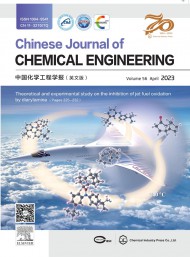
Chinese Journal of Chemical Engineering
SCI期刊
北京
月刊
-
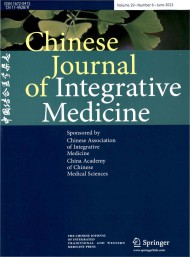
Chinese Journal of Integrative Medicine
SCI期刊
北京
月刊
-
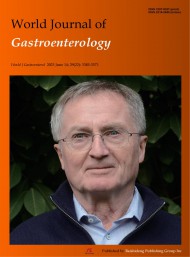
World Journal of Gastroenterology
SCI期刊
北京
周刊
-
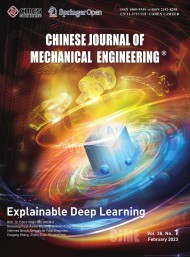
Chinese Journal of Mechanical Engineering
SCI期刊
北京
双月刊
-

World Journal of Gastroenterology
SCI期刊
北京
周刊
-
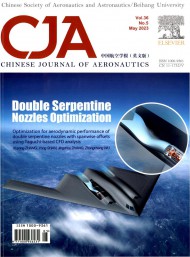
Chinese Journal of Aeronautics
SCI期刊
北京
双月刊
-
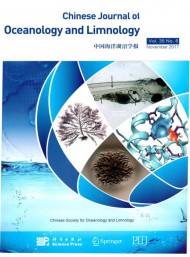
Chinese Journal of Oceanology and Limnology
SCI期刊
山东
双月刊
-

International Journal of Minerals Metallurgy and Materials
SCI期刊
北京
月刊